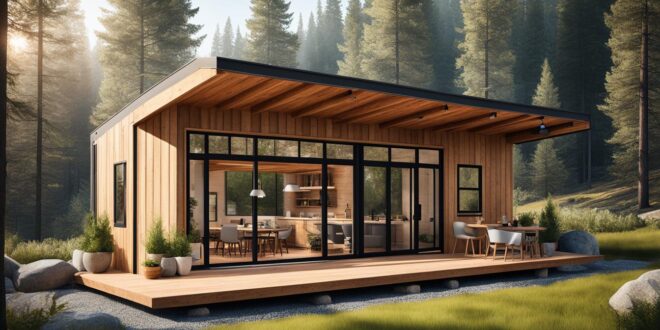In recent years, there has been a growing trend towards sustainable living, and one of the most popular ways to embrace this lifestyle is through tiny home construction. These small, efficient dwellings offer numerous benefits, including reduced energy consumption, a smaller environmental footprint, and financial savings. In this article, we will explore the art of tiny home living, including tips for maximizing space and embracing a simpler life.
Eco-Friendly Choices: Sustainable Practices and Technologies in Tiny Home Construction
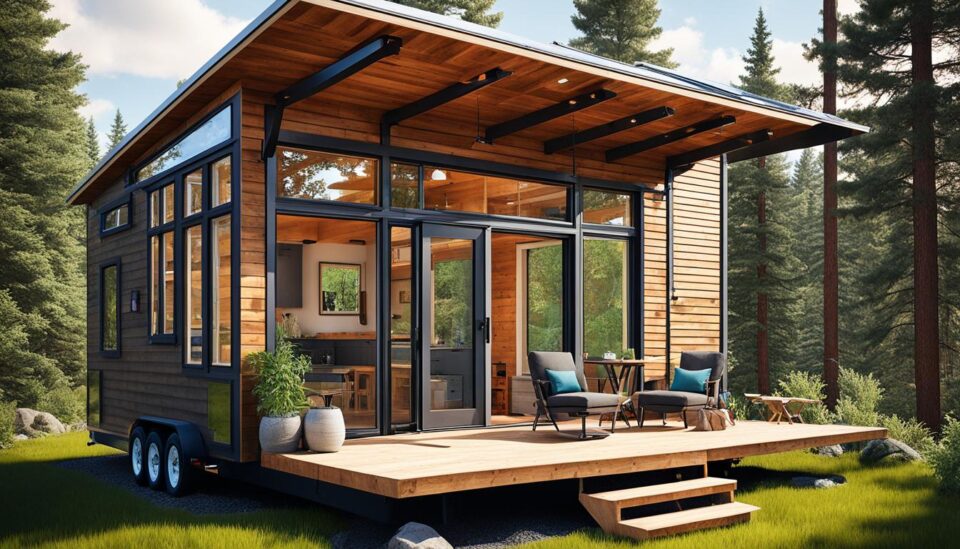
Constructing a tiny home with a focus on minimizing energy consumption presents an opportunity to make eco-friendly choices. By selecting sustainable building materials such as reclaimed wood, bamboo, or recycled steel, the ecological impact can be significantly reduced. These materials not only contribute to a smaller environmental footprint but also add character and uniqueness to the tiny home.
Another essential aspect of eco-friendly tiny home design is incorporating renewable energy systems. By installing solar panels, tiny homes have the ability to generate their electricity, reducing reliance on the grid and minimizing carbon emissions. This sustainable approach not only promotes energy efficiency but also offers long-term cost savings.
Maximizing space utilization through innovative design features enables tiny homes to provide comfortable and functional living spaces. Despite their size, tiny homes can incorporate intelligent spatial arrangements such as built-in storage solutions, multifunctional furniture, and optimized layouts. These design choices ensure that every square inch is utilized efficiently.
Efficient water management systems are also vital in eco-friendly tiny home construction. Installing low-flow faucets and implementing rainwater harvesting systems promote responsible water usage and significantly reduce environmental impact. These practices not only conserve water but also contribute to sustainable living.
The Benefits of Downsizing: Health and Psychological Advantages of Tiny Home Living
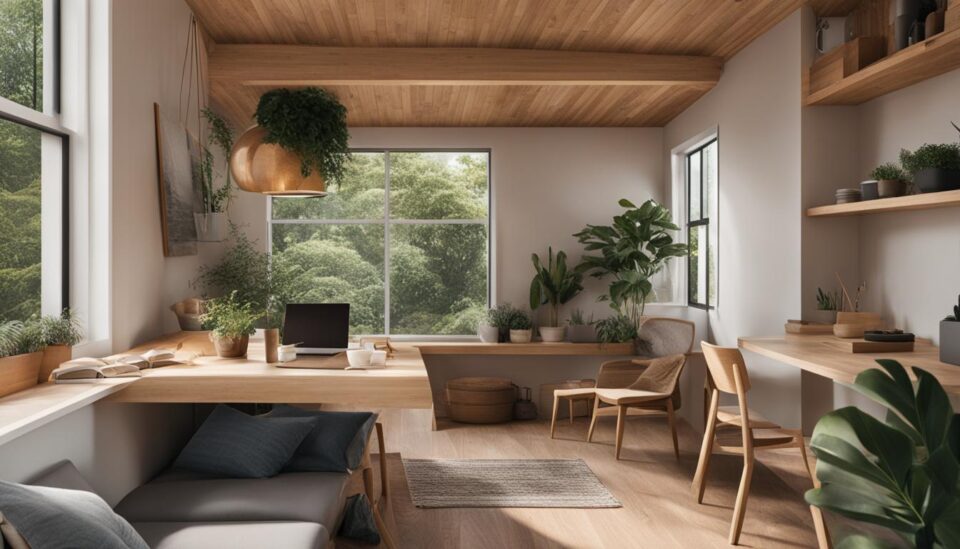
Beyond the financial benefits, downsizing to a tiny home offers numerous health and psychological advantages. Living in a clutter-free environment can reduce stress levels and promote relaxation.
The financial freedom that comes with smaller monthly expenses allows for greater flexibility in allocating resources. Tiny homes have a smaller environmental footprint and can be situated in natural settings, promoting a stronger connection with nature and enhancing mental well-being. The mobility of tiny homes provides a sense of adventure and flexibility in changing surroundings.
By embracing a minimalist lifestyle, individuals can experience the benefits of a simpler, more intentional way of living. The reduced space and belongings in a tiny home can lead to a calmer and more focused mindset, enabling residents to prioritize what truly matters in life.
Health Benefits of Tiny Home Living
- Reduced stress levels
- Promotion of relaxation
- Improved sleep quality
- Encouragement of physical activity
- Enhanced indoor air quality
Psychological Benefits of Tiny Home Living
- Greater financial freedom
- Increased flexibility and adaptability
- Enhanced connection with nature
- Sense of adventure and exploration
- Stronger sense of community in tiny home communities
Living in a tiny home can provide a sense of empowerment and liberation from the pressures of modern society. It allows individuals to focus on their well-being, relationships, and personal growth, rather than being burdened by excessive possessions and financial obligations.
Minimalist Décor Creating a Stylish and Serene Atmosphere in Tiny Homes
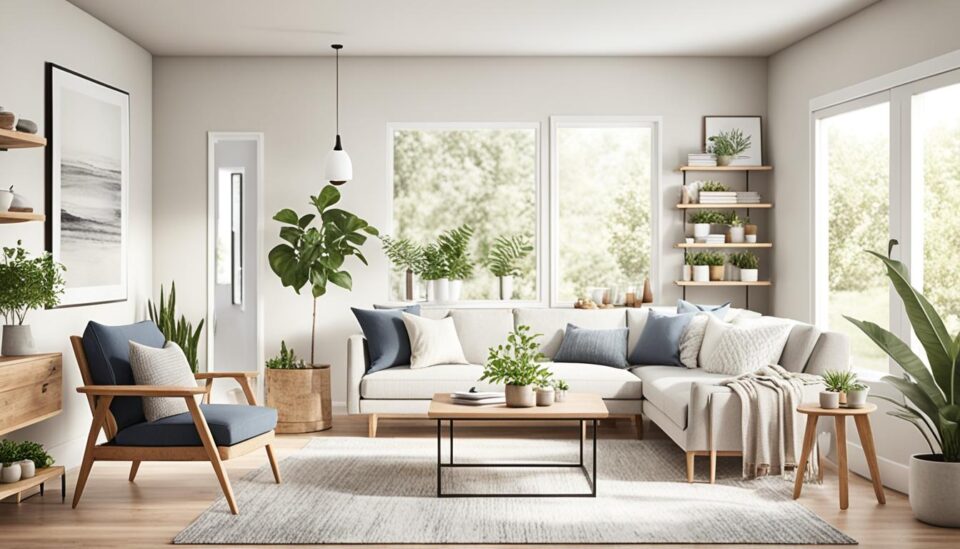
When it comes to tiny home living, minimalist décor plays a crucial role in optimizing space and creating a harmonious environment. By embracing the principles of elegant simplicity, tiny homes can achieve a stylish and serene atmosphere that promotes a sense of relaxation and well-being.
Utilizing a neutral color palette is a fundamental aspect of minimalist décor. Shades of white, beige, and gray create a clean and timeless backdrop, allowing the limited space to appear more open and expansive. These subdued tones also contribute to a serene atmosphere, evoking a sense of calmness and tranquility.
Functional furniture is another key element of minimalist décor in tiny homes. It’s important to choose pieces that serve multiple purposes and maximize space utilization. Opt for convertible sofas, foldable tables, and modular storage solutions to optimize functionality without compromising on style.
Incorporating natural textures and materials can add warmth and depth to the minimalist aesthetic. Consider using wood accents, woven rugs, and organic textiles to introduce a touch of nature into the space. These elements create a sense of balance and harmony, enhancing the overall aesthetic appeal of the tiny home.
Minimalist décor is not just about reducing clutter; it’s about curating a carefully selected collection of decorative accents. Choose a few statement pieces such as artwork or decorative objects that align with the minimalist theme. By doing so, the tiny home can make a bold statement through simplicity and refined aesthetics.
Remember, the key to successful minimalist décor in a tiny home is to prioritize quality over quantity. Each item should serve a purpose and contribute to the overall aesthetics and functionality of the space. By embracing minimalist décor, tiny homes can achieve a visually pleasing and serene atmosphere that enhances the joy and simplicity of tiny home living.
Practical Tips for Minimalist Tiny House Living
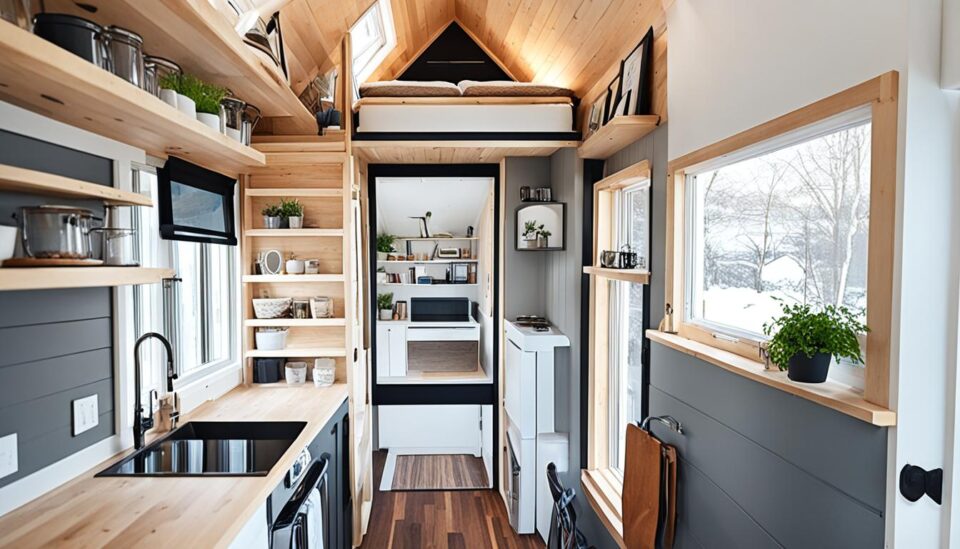
Living minimally in a tiny home requires intentional choices and creative solutions to make the most of limited space. Here are some practical tips to help you create a functional and visually appealing living space in your minimalist house.
1. Declutter and Keep Essentials
The first step to maximizing space in a tiny home is to declutter and keep only the essentials. Embrace minimalism by letting go of unnecessary belongings and keeping only what you truly need and cherish. This not only creates more physical space but also promotes a sense of calm and simplicity in your living environment.
2. Invest in Multifunctional Furniture
In a tiny home, every piece of furniture needs to serve multiple purposes. Invest in multifunctional furniture that can be used for seating, storage, and even as a workspace. For example, a sofa with built-in storage or a folding dining table that can be tucked away when not in use.
3. Utilize Smart Storage Solutions
To maximize space efficiency, utilize smart storage solutions throughout your tiny home. Consider installing built-in cabinets and shelves that make use of vertical space. Utilize under-bed storage, hanging organizers, and wall-mounted racks to keep your belongings organized and easily accessible.
4. Clever Design Ideas for Small Spaces
Clever design ideas can make a big difference in a small space. Utilize vertical storage by installing floating shelves or utilizing wall space for hanging storage. Open shelving can not only provide storage but also serve as a display for your favorite items, adding a personal touch to your minimalist home.
5. Embrace Natural Light
Maximize the use of natural light in your tiny home to create a sense of spaciousness. Keep windows uncovered or use sheer curtains to allow sunlight to brighten up your living space. Mirrors strategically placed can also reflect light and make the room feel more open.
6. Create Visual Continuity
Choose a consistent color palette and minimalistic decor to create visual continuity throughout your tiny home. This helps create a sense of harmony and spaciousness. Opt for light and neutral colors that can visually expand the space.
7. Curate Your Belongings
Be intentional when it comes to the belongings you bring into your tiny home. Curate your possessions and surround yourself with items that hold meaning and value to you. By only keeping what truly matters, you can maintain an uncluttered and serene living space.
By following these practical tips, you can create a minimalist tiny home that maximizes space and offers a visually appealing and comfortable living environment for you to enjoy.
Incorporating Nature into Tiny Home Living
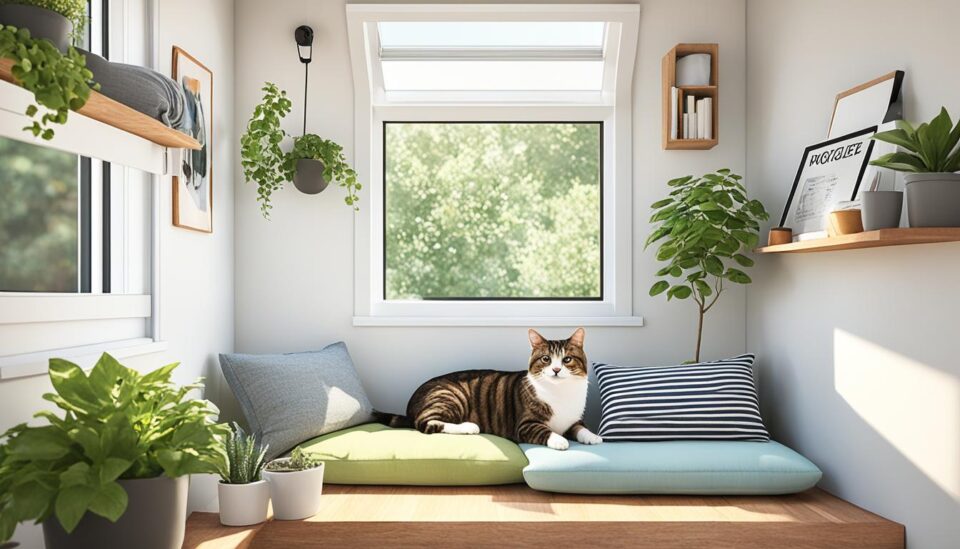
Living in a tiny home opens up numerous opportunities to connect with nature and embrace a more environmentally conscious lifestyle. Whether you choose to have a small garden, create outdoor living spaces, or even bring pets into your tiny home, these elements can enhance your relationship with the natural world. Studies have shown that being in close proximity to nature can improve mental health and overall well-being, making it an integral part of tiny home living.
If you have the space, consider setting up a small garden outside your tiny home. This can be a great way to grow your own organic produce and bring a touch of greenery into your living space. You can plant herbs, vegetables, or even flowers, depending on your preferences and the available space. The sight and smell of nature can create a calming and peaceful atmosphere, allowing you to enjoy the benefits of living close to nature.
Outdoor living spaces are another fantastic way to incorporate nature into your tiny home lifestyle. Designate an area outside your tiny home for relaxation and leisure activities. You can set up a comfortable seating area, install a hammock, or create a cozy spot for reading and enjoying the fresh air. This outdoor space can serve as an extension of your tiny home, providing a tranquil retreat where you can unwind and connect with nature.
For those who are animal lovers, living in a tiny home doesn’t mean giving up the joy of having pets. Many tiny homeowners successfully keep pets in their small living spaces, making it a truly pet-friendly environment. You can create designated areas for pets, complete with their own cozy beds and toys. Additionally, taking your pets for walks and spending time together outdoors allows you to enjoy the beauty of nature while bonding with your furry companions.
Living in a tiny home provides a unique opportunity to live closer to nature and discover the benefits it brings. Whether you choose to have a small garden, create outdoor living spaces, or enjoy the companionship of pets, incorporating nature into your tiny home lifestyle can enhance your well-being and create a more fulfilling living experience.
Challenges and Rewards of Minimalist Tiny House Living
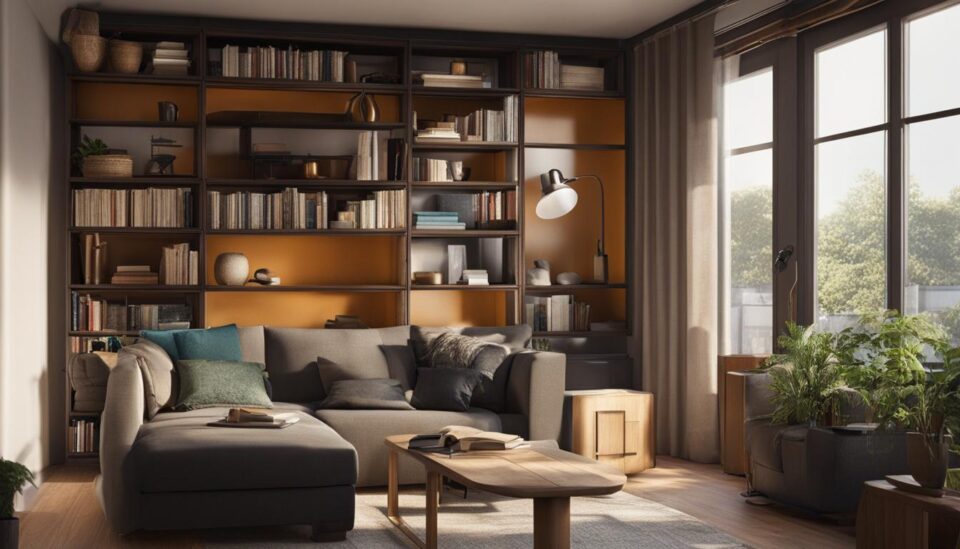
Living in a tiny home presents its fair share of challenges, but the rewards are equally abundant. One of the main challenges of tiny home living is the need to let go of belongings. With limited space, individuals must carefully consider what items are essential and necessary for their day-to-day lives. This process of decluttering can be emotionally challenging as it requires individuals to prioritize their possessions and detach from materialistic attachments.
Another challenge of tiny home living is sharing a small space with others. Whether it’s living with a partner or a small family, close quarters can occasionally lead to conflicts and a lack of privacy. It takes patience, understanding, and effective communication to navigate these challenges and ensure a harmonious living environment.
Despite the challenges, minimalist tiny home living offers a multitude of rewards. One of the most significant rewards is the financial freedom it provides. By downsizing and reducing living expenses, individuals can save money and allocate their resources towards experiences, travel, or personal goals. Tiny home living also decreases the ecological footprint, contributing to a more sustainable lifestyle and helping to protect the environment.
Living in a tiny home also promotes reduced stress levels. The simplicity and minimalism of tiny home living create a calming and serene atmosphere, free from the clutter and distractions commonly found in larger homes. This environment fosters relaxation and promotes overall well-being.
Furthermore, tiny home living often comes with the added benefit of a sense of community. Many tiny home enthusiasts join communities or engage with others who share similar values and lifestyles. This sense of belonging and connection can be immensely rewarding, providing a support system and opportunities for shared experiences.
In conclusion, the challenges of tiny home living, such as letting go of belongings and sharing a small space, are outweighed by the rewards it offers. Financial freedom, reduced stress levels, a smaller environmental footprint, and a sense of community are just a few of the benefits that come with embracing minimalist tiny home living.
Building a Tiny Home on a Budget

Building a tiny home on a budget requires careful planning and resourcefulness. By utilizing salvaged materials, opting for DIY construction, and finding cost-effective solutions, you can keep costs down without compromising on quality. Researching zoning regulations and building codes is also crucial to ensure a smooth and affordable build. Here are some tips for building a tiny home on a budget:
- Utilize salvaged materials: Look for reclaimed or repurposed materials that can be used in your tiny home construction. Salvaged wood, windows, doors, and fixtures can add character while saving money.
- Consider DIY construction: Taking a hands-on approach and doing as much of the construction work as possible yourself can significantly reduce labor costs.
- Find cost-effective solutions: Look for affordable alternatives to expensive building materials and fixtures. For example, consider using plywood instead of hardwood flooring or laminate countertops instead of granite.
- Optimize space efficiency: Design your tiny home to maximize space utilization. Utilize multifunctional furniture, such as beds with built-in storage or foldable tables, to make the most of limited space.
- Join local building communities: Connect with others who are also building tiny homes on a budget. They may have valuable insights and resources to share, such as recommendations for affordable suppliers or construction techniques.
- Shop sales and clearance: Keep an eye out for sales, discounts, and clearance events at home improvement stores and online retailers. You might find great deals on building materials, appliances, and fixtures.
- Consider alternative financing options: If traditional home loans are not feasible, explore alternative financing options such as personal loans, crowdfunding, or partnerships.
- Reuse and repurpose: Look for creative ways to repurpose materials and items you already have. For example, repurposing old furniture or using reclaimed shipping containers can save money and add a unique touch to your tiny home.
- Stay organized: Keeping track of your budget, expenses, and timelines is crucial throughout the building process. This helps you stay on track and avoid overspending.
Building a tiny home on a budget requires creativity, resourcefulness, and careful planning. By following these tips, you can create an affordable and beautiful tiny home that meets your needs and financial constraints.
Tiny Home Communities: Finding Community in Small Spaces
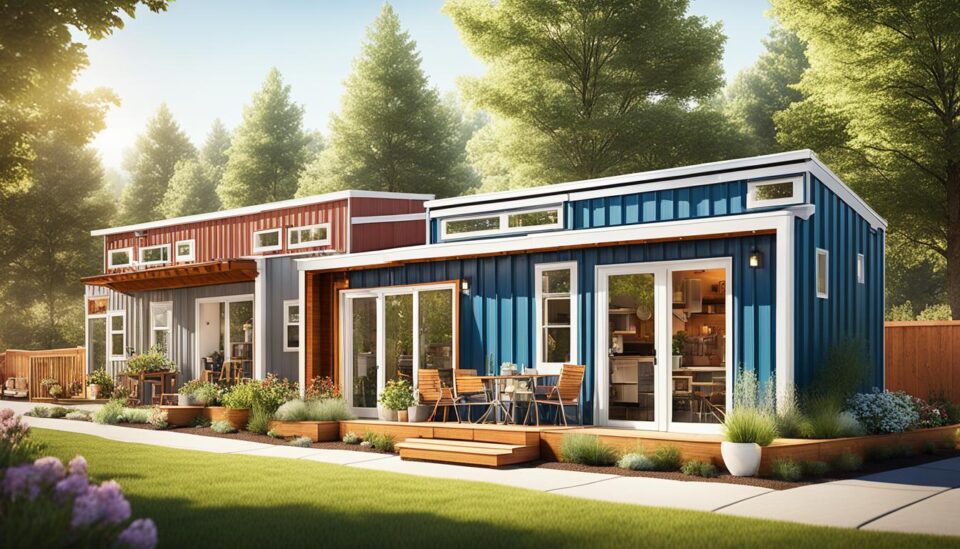
Tiny home communities offer a unique opportunity for individuals seeking a sense of belonging and connection with like-minded individuals. Living in close proximity to others fosters a strong sense of community and supports a shared vision for sustainable living. In these communities, residents can engage in meaningful interactions, share resources, and contribute to a more collaborative way of life.
The benefits of living in a tiny home community extend beyond social connections. Many communities provide a range of amenities and shared spaces that enhance the overall living experience. These amenities may include communal gardens, gathering areas, fitness centers, and common rooms where residents can socialize and build relationships with their neighbors.
One of the advantages of tiny home communities is the opportunity for residents to participate in community events and activities. Whether it’s organizing potluck dinners, movie nights, or workshops on sustainable living, these events foster a sense of togetherness and create lasting bonds within the community.
By living in a tiny home community, individuals not only have the chance to live in a small, sustainable space but also to be part of a supportive and collaborative environment. Whether you’re seeking a greener lifestyle, a stronger sense of community, or simply a more affordable housing option, tiny home communities provide a fulfilling way to experience the benefits of tiny home living.
Benefits of Tiny Home Communities:
- Sense of Belonging: Living in a close-knit community fosters a sense of belonging and connection with like-minded individuals.
- Amenities and Shared Spaces: Community amenities and shared spaces enhance the overall living experience, providing opportunities for social interaction and engagement.
- Community Events: Residents can participate in community events and activities, creating a sense of togetherness and building lasting relationships.
- Sustainable Living: Tiny home communities support a shared vision for sustainable living, allowing residents to learn from and inspire one another.
- Affordability: Living in a tiny home community offers an affordable housing option that promotes financial freedom and a simpler way of life.
Designing a Tiny Home for Families
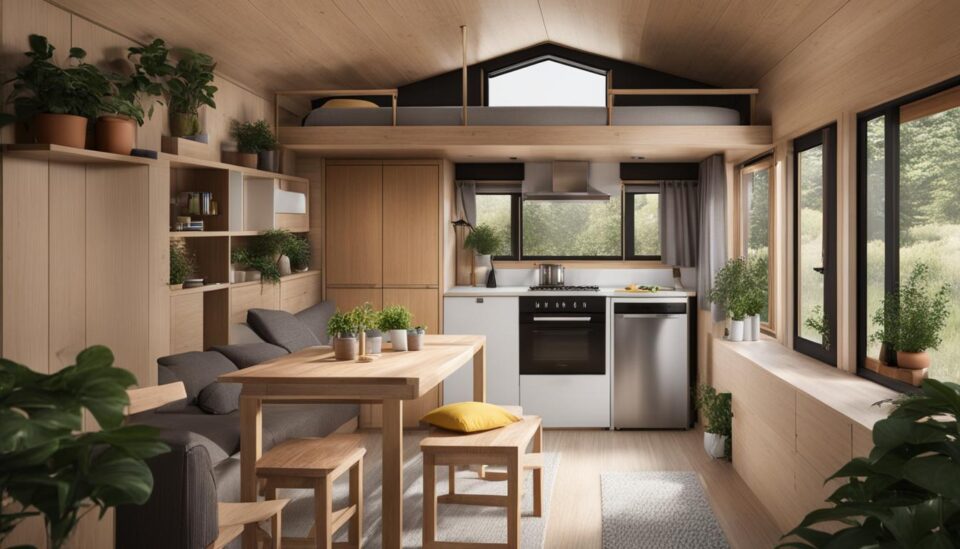
Designing a tiny home for families requires careful consideration of layout and functionality. Families need to make the most of limited space while ensuring comfort and convenience for every family member.
Utilizing vertical space is a key strategy in designing tiny homes for families. With limited horizontal space, it’s essential to think vertically. Installing lofted sleeping areas or bunk beds can help maximize floor space while providing individual sleeping arrangements for each family member.
Incorporating multi-purpose furniture is another smart design choice. From storage ottomans that can double as seating to foldable dining tables, multi-purpose furniture saves valuable space and adds functionality to the tiny home. For example, a dining table that can extend or retract based on the number of family members dining together is a practical solution.
Creating designated areas for each family member promotes a sense of privacy and personal space. This can be achieved through the use of room dividers or curtains to separate different areas within the tiny home. Each family member should have a designated workspace, sleeping area, and storage space tailored to their needs.
Creative storage solutions are crucial in a tiny home for families. Built-in storage compartments, hidden drawers, and wall-mounted shelves help keep belongings organized and minimize clutter. Maximizing storage space ensures that every item has its place, making it easier to maintain a tidy and comfortable living environment for the entire family.
Adaptable spaces are essential in tiny homes for families as they allow the home to grow and evolve with the family’s changing needs. Designing multi-functional rooms that can serve multiple purposes, such as a living room that converts into a guest bedroom or a home office that also doubles as a playroom, ensures flexibility and practicality.
Designing a tiny home for families requires thoughtful planning and creative solutions. By prioritizing space maximization, multi-purpose functionality, designated areas, and creative storage, families can create a comfortable and efficient living space in a small home.
Innovative Tiny Home Technology for Modern Living
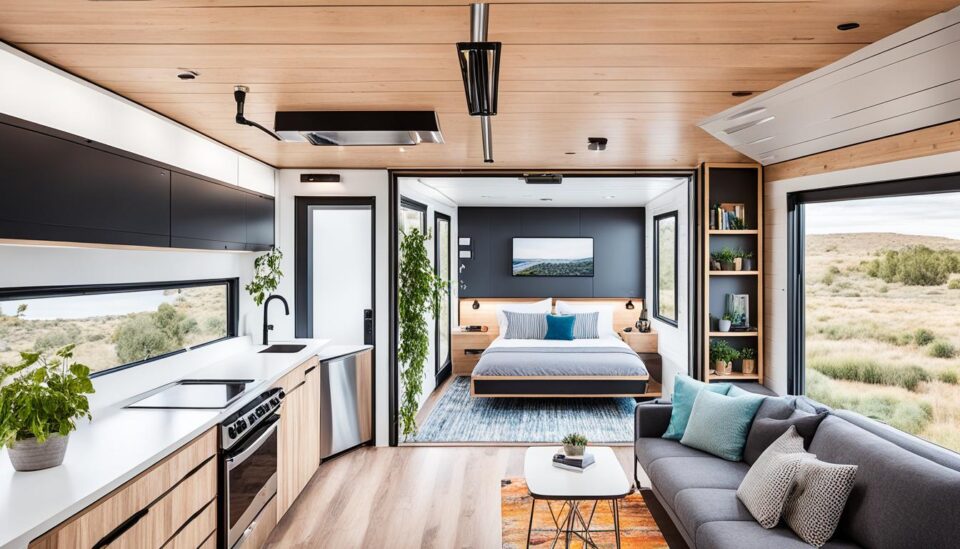
Advancements in technology have revolutionized the way we live, and tiny homes are no exception. The integration of innovative technology into tiny home design has opened up a world of possibilities for modern living. From smart home automation systems to compact appliances and energy-efficient technologies, these innovations enhance convenience, sustainability, and optimize the limited space available in tiny homes.
Smart Home Automation Systems
One of the most significant technological advancements in tiny home living is the integration of smart home automation systems. These systems allow homeowners to control various aspects of their homes, such as lighting, temperature, security, and entertainment, through their smartphones or voice-activated devices. By automating processes and using sensors, smart home technology maximizes efficiency and enhances comfort, making tiny home living even more convenient and enjoyable.
Compact and Multi-functional Appliances
With space being a premium in tiny homes, compact and multi-functional appliances have become essential. Manufacturers have developed innovative appliances that combine multiple functions into one unit, saving valuable space without compromising functionality. For example, there are compact washer-dryer combos that can handle laundry needs without the need for separate machines. There are also multi-purpose kitchen appliances that can perform functions like grilling, baking, and air frying in a single device, reducing the number of appliances needed and optimizing space utilization.
Energy-Efficient Technologies
Energy efficiency is a crucial aspect of tiny home living, and advancements in technology have made it easier than ever to achieve sustainable energy solutions. Tiny homes can now incorporate solar panels to harness renewable energy and power the home’s electrical systems. These panels capture energy from the sun, reducing reliance on traditional power sources and decreasing utility costs. Additionally, energy-efficient lighting fixtures, appliances, and insulation systems help minimize energy consumption in tiny homes, making them more environmentally friendly and cost-effective.
Optimizing Space Utilization
Space optimization is a common challenge in tiny home living, but technology has provided innovative solutions. Designers have created space-saving furniture with features like foldable tables, retractable beds, and hidden storage compartments to maximize space utilization. There are also smart storage solutions that utilize every nook and cranny, such as built-in storage under stairs or in walls. These practical and ingenious designs ensure that every square inch of a tiny home serves a purpose, creating a functional and organized living space.
In conclusion, innovative technology has greatly enhanced the possibilities for modern living in tiny homes. From smart home automation systems to energy-efficient technologies and space optimization solutions, these advancements make tiny home living more convenient, sustainable, and comfortable. By embracing these innovations, homeowners can enjoy the benefits of a well-designed, technologically advanced tiny home that meets their needs and enhances their overall quality of life.
Living Off-Grid in a Tiny Home
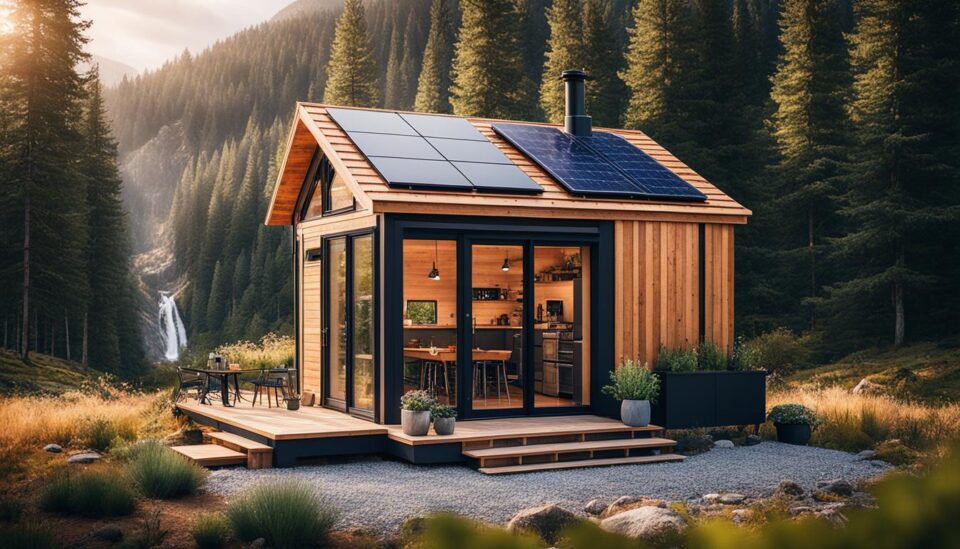
Tiny homes offer an incredible opportunity to live off-grid, reducing reliance on public utilities and embracing a sustainable and independent lifestyle. One of the key aspects of off-grid living in a tiny home is incorporating renewable energy systems.
Solar panels are a popular choice for generating electricity in off-grid tiny homes. These panels harness energy from the sun and convert it into usable electricity, allowing homeowners to power their homes without being connected to the grid. With advances in solar technology, even the limited roof space of a tiny home can generate enough energy to meet the household’s needs.
In addition to solar power, off-grid tiny homes often utilize composting toilets or rainwater harvesting systems. Composting toilets are a sustainable and eco-friendly alternative to traditional water-flushing toilets. They turn waste into nutrient-rich compost, reducing water consumption and eliminating the need for a sewage connection. Rainwater harvesting systems collect rainwater from the roof and store it for various uses, such as watering plants or flushing toilets, eliminating the need for a conventional water supply.
Living off-grid in a tiny home not only reduces environmental impact but also promotes self-sufficiency and a greater sense of independence. By embracing renewable energy systems and sustainable practices, individuals can enjoy the freedom and satisfaction that comes with living off-grid in a tiny home.
Tiny Home Living with Pets
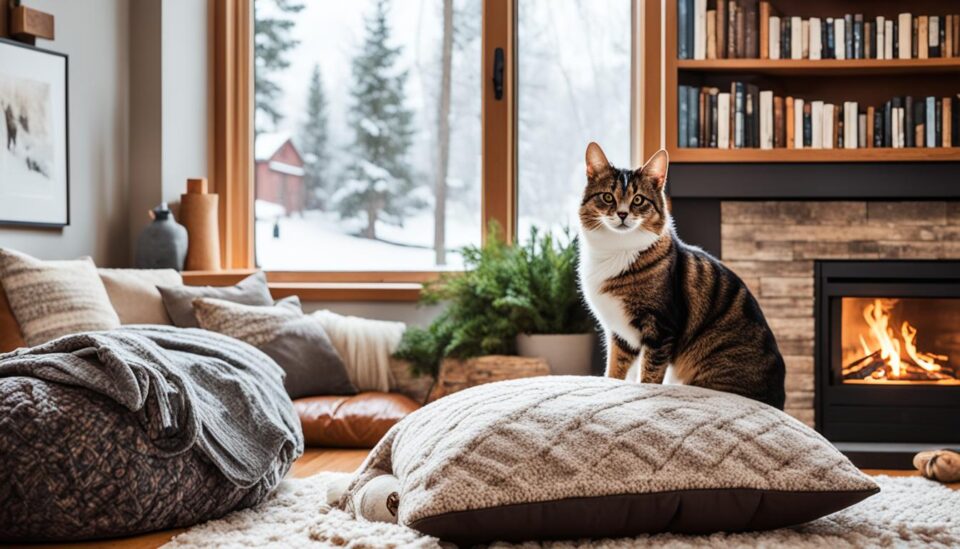
Living in a tiny home with pets can be a rewarding experience, but it requires thoughtful planning and design to ensure the comfort and well-being of both you and your furry companions. Here are some essential considerations for creating a pet-friendly tiny home:
Utilizing Foldable Pet Furniture
In a limited space, it’s crucial to maximize functionality. Opting for foldable pet furniture, such as collapsible beds, crates, and feeding stations, allows you to provide comfort for your pets when needed while easily stowing away these items when not in use. This approach keeps your tiny home visually appealing and clutter-free.
Creating Designated Areas for Pets
Designating specific areas for your pets within your tiny home helps establish boundaries and provides them with their own space. Consider incorporating built-in pet beds or nooks that blend seamlessly with your overall design. These designated areas give your pets a sense of belonging and allow them to retreat to their own cozy spot.
Ensuring Adequate Outdoor Space
While the interior space of a tiny home may be limited, it’s essential to provide your pets with access to outdoor areas. This can be in the form of a small fenced yard, a secure balcony, or a nearby park. Outdoor space allows your pets to exercise, explore, and satisfy their natural instincts. Just be sure to prioritize their safety and follow any local regulations regarding pet access.
Proper Ventilation
Ventilation is crucial in a tiny home, particularly when living with pets. Proper airflow helps maintain a fresh and odor-free environment. Consider installing adjustable vents or windows with secure screens to ensure a constant flow of fresh air while keeping your pets safe inside. Adequate ventilation promotes a healthy living space for everyone.
Easy Maintenance
Keeping a clean and hygienic space is essential in a tiny home, especially when living with pets. Opt for easy-to-clean surfaces, such as laminate or tile flooring, and avoid materials that may trap odors or stains. It’s also helpful to create accessible storage solutions for pet supplies, making it easier to keep everything organized and maintain a tidy living area.
By implementing these considerations, you can create a harmonious and pet-friendly environment within your tiny home. Remember, a serene and comfortable living space for both you and your pets is key to enjoying the benefits of tiny home living with your furry companions.
Future of Tiny Home Living
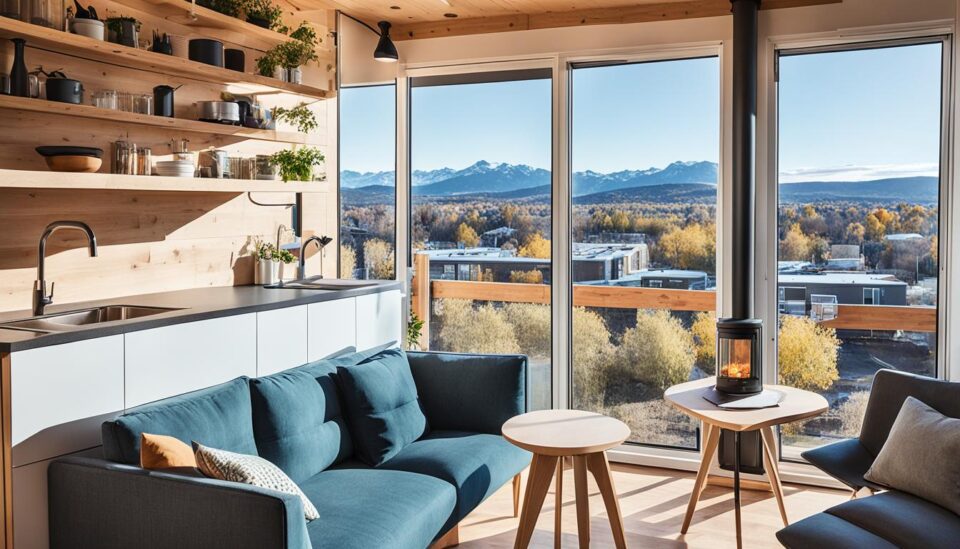
The future of tiny home living is bright, driven by the increasing demand for smaller, more sustainable housing options. With innovations in design, technology, and community planning, the tiny home movement is poised to evolve and expand, offering a glimpse into a more environmentally friendly and affordable future.
One key aspect shaping the future of tiny home living is design. Architects and builders are continuously exploring new ways to maximize space and create functional living environments within the constraints of a tiny home. From multi-purpose furniture to modular designs, these innovations enable homeowners to make the most of their limited square footage, proving that a tiny home can be both stylish and practical.
Technology also plays a significant role in the future of tiny home living. With advancements in smart home automation systems, energy-efficient appliances, and renewable energy solutions, homeowners can enhance the comfort and sustainability of their tiny homes. From solar panels powering the home to intelligent lighting systems, these technologies help reduce environmental impact and improve energy efficiency.
Another exciting development in the future of tiny home living is the growth of tiny home communities. These intentional communities offer a sense of belonging and shared values among like-minded individuals. Community amenities, such as shared gardens and communal spaces, foster a strong sense of community and provide opportunities for social interaction, making tiny home living an inclusive and fulfilling experience.
As more people become aware of the benefits of tiny home living, the demand for these sustainable and affordable housing options will continue to rise. Governments and municipalities are recognizing the value of tiny homes and are introducing legislation and zoning regulations to accommodate and support this growing movement.
The future of tiny home living is an exciting one, with endless possibilities for innovation, sustainability, and community building. As more individuals embrace the simplicity and freedom that comes with living in a tiny home, we can expect to see a shift towards a more sustainable, connected, and mindful way of life.
Conclusion
In conclusion, tiny home living offers a unique opportunity to embrace minimalism, maximize space, and lead a more sustainable lifestyle. By implementing the tips and strategies explored in this article, individuals can create functional, comfortable, and aesthetically pleasing living spaces within the constraints of a tiny home. Whether it’s reducing environmental impact, finding financial freedom, or fostering a stronger connection with nature, tiny home living provides a path to a simpler, more intentional way of life.
 Sharing is Caring Blog Something different…
Sharing is Caring Blog Something different…
